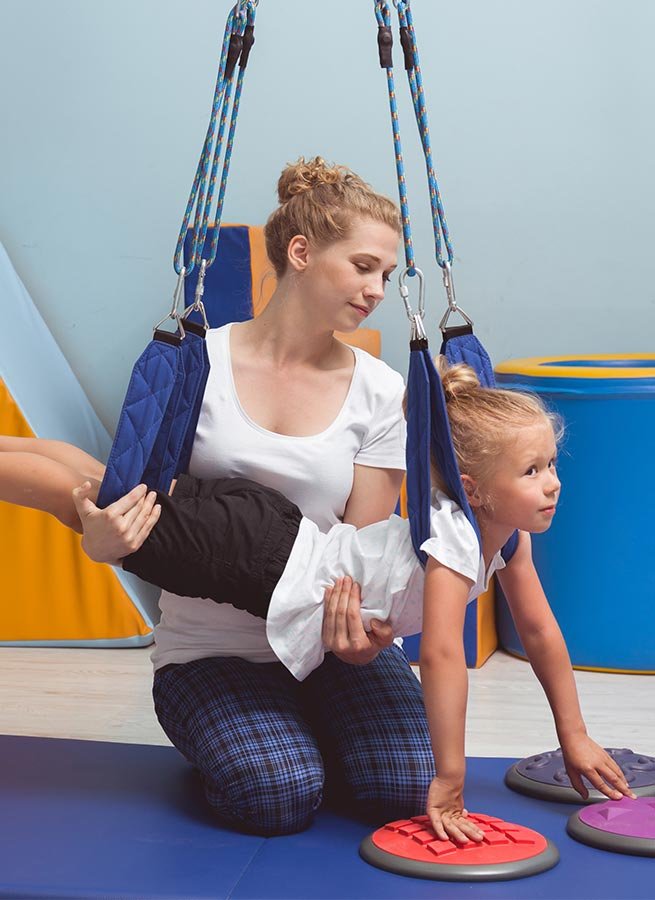Sensory Integration Therapy
Overview of Sensory Integration Therapy
Sensory integration refers to the process by which the brain organizes and interprets sensory information received from the environment. Children with conditions like Cerebral Palsy or those born prematurely might exhibit signs of sensory integrative disabilities. This involves an atypical level of neural processing, either diminished or heightened.
Sensory integration disabilities can manifest in various ways, impacting a child’s movements, fine motor skills (such as pencil grip affecting writing), and sensory sensitivity. These disabilities may result in mental or physical discomfort and weakness. Sensory integration therapy is often used to address difficulties related to vision, auditory perception, and balance.
In children with Cerebral Palsy, various organ disabilities may arise, affecting different sensory domains:
- Auditory: Difficulty in detecting sounds.
- Olfactory: Problems related to the sense of smell.
- Oral: Challenges in experiencing taste.
- Proprioception processing: Difficulty in understanding spatial orientation, object weight, pressure, movement, and body position.
- Tactile or somatosensory: Issues related to touch perception.
- Visual problems.

FAQs on Sensory Integration Therapy
Different sports injuries produce different symptoms and complications. The most common types of sports injuries we treat include:
Sensory Integration Therapy is a specialized therapeutic approach designed to assist individuals, particularly children, who encounter challenges in processing sensory information. This therapy utilizes structured activities aimed at improving sensory responses and enhancing an individual’s ability to engage effectively with their surroundings.
Sensory Integration Therapy is beneficial for children or individuals facing sensory processing difficulties, such as those with Autism Spectrum Disorder (ASD), Attention-Deficit/Hyperactivity Disorder (ADHD), Sensory Processing Disorder (SPD), developmental delays, or various neurological conditions. It helps in improving their sensory processing abilities and overall functioning.
The primary objectives of Sensory Integration Therapy include enhancing sensory processing skills, improving motor abilities, fostering self-regulation, boosting attention and concentration, and facilitating better engagement in daily activities by effectively managing sensory stimuli.
Sensory Integration Therapy involves therapists utilizing diverse sensory-rich activities tailored to an individual’s specific needs. These activities may encompass swinging, jumping, tactile experiences, balance exercises, and other tasks, helping individuals learn to respond appropriately to sensory input.
Sensory Integration Therapy aims to enhance an individual’s ability to process and respond to sensory input, leading to improved behavior, self-regulation, motor skills, attention, social interaction, and overall participation in daily activities. However, outcomes may vary based on the individual’s unique needs and progress.
Get In Touch With Us
Our team is dedicated to providing personalized support tailored to your loved one’s needs. Let’s embark on this journey together.
